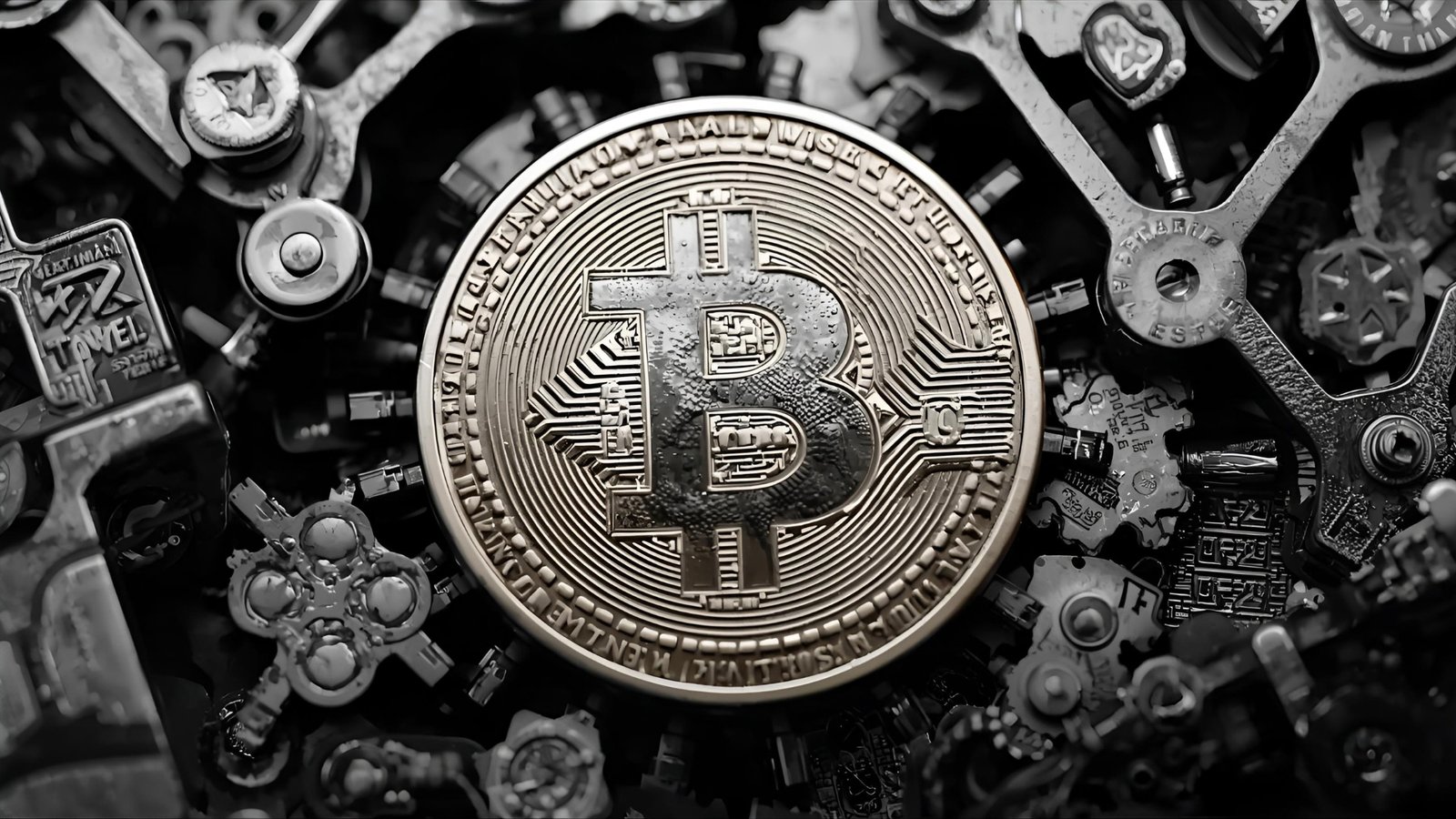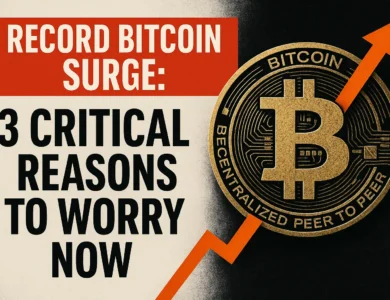
The past few years have proven something veteran traders suspected, but many crypto-native investors only learned the hard way: digital assets do not float in a vacuum. When the Federal Reserve tightens or loosens financial conditions, the shockwaves travel far beyond Wall Street. They reach exchanges, wallets, and protocols across the globe. Understanding how rising US rates affect crypto is now table stakes for anyone who allocates to Bitcoin, Ethereum, or the broader Web3 ecosystem.
The Federal Reserve’s policy path—rate hikes, quantitative tightening (QT), and balance-sheet policy—shapes the cost of capital, the strength of the US dollar, risk appetite, and the availability of liquidity. Those same variables, in turn, set the tone for Bitcoin volatility, altcoin performance, DeFi yields, and stablecoin flows. This article unpacks the mechanics behind the Fed’s ripple effect and translates them into practical implications for crypto investors.
We’ll trace the chain from macro policy to market microstructure: how higher yields reprice risk assets, why a stronger dollar often pressures digital tokens, what QT does to liquidity-sensitive markets, and how these forces filter into derivatives, on-chain activity, miners’ economics, and venture funding. You’ll also find guidance on reading key indicators—like real yields, the US dollar index (DXY), the yield curve, and funding rates—so you can make sense of crypto’s reactions in real time. By the end, you’ll understand not only what usually happens when the Fed tightens, but also where the exceptions—and opportunities—tend to hide.
Why the Fed Matters to a Borderless Market
At first glance, a decentralized, always-on market priced in thousands of trading pairs shouldn’t be tethered to a single country’s central bank. But the Fed controls the world’s most important benchmark interest rate and the value of the world’s reserve currency. When US rates rise, the global cost of dollars rises. Since exchanges, market makers, and crypto funds rely heavily on dollar funding and dollar-stable collateral, a repricing of USD funding flows directly impacts the crypto market plumbing. Tighter dollar conditions reduce risk-taking capacity, widen spreads, and make leverage more expensive. Conversely, easing tends to lubricate liquidity and invite risk-on behavior.
Crypto, while innovative, remains a liquidity-sensitive asset class. Prices often move the most when incremental buyers can access cheap capital and when stablecoin supply is expanding. The Federal Reserve’s policy can accelerate or decelerate those flows. Even if you never borrow, your counterparties and the venues you trade on likely do. That is why rising US rates affect crypto even for spot-only, long-term holders.
The Transmission Mechanism From Rate Hikes to Token Prices

Higher Risk-Free Yields Reprice Future Narratives
Every asset competes with the return on cash and Treasuries. When the Fed hikes, the risk-free rate climbs, and the discount rate investors use for risky cash flows rises. In traditional markets, that lowers the present value of equities—especially growth names where profits lie in the distant future. In crypto, a similar logic applies to tokens valued on adoption narratives and total addressable market (TAM) rather than current cash flows. As yields rise, investors demand more return to justify holding volatile tokens, reducing exposure to speculative altcoins and rotating toward assets with perceived “hard money” properties, like Bitcoin.
Dollar Strength Is a Headwind to Crypto Demand
Rate differentials draw capital into higher-yielding currencies. US rate hikes often strengthen the dollar versus global peers. A stronger USD tends to pressure commodity-like assets and dollar-quoted risk assets. For international crypto participants who fund in local currency, buying Bitcoin with a strong dollar is more expensive, which can dampen marginal demand. In addition, a firm USD can slow stablecoin inflows into exchanges, constraining the immediate firepower available to buy dips.
Quantitative Tightening Drains System Liquidity
Raising policy rates is one lever; shrinking the Fed’s balance sheet is another. Quantitative tightening (QT) removes bank reserves from the system as Treasuries and mortgage-backed securities roll off. All else equal, fewer reserves translate into tighter funding markets and higher collateral scarcity. Crypto’s market structure—heavily reliant on derivatives, collateral rehypothecation, and stablecoin market makers—feels QT through reduced balance-sheet capacity. Wider basis spreads, spikier funding rates, and lower open interest often accompany sustained QT.
The Risk-On / Risk-Off Channel
When financial conditions tighten, investors sell volatile exposures first. Crypto, with its 24/7 liquidity and rapid price discovery, often becomes the expression vehicle for de-risking. That is why sharp moves in real yields can trigger swift drawdowns in digital assets. Conversely, when the Fed signals a pause or pivot, crypto tends to rally early and aggressively, anticipating a return of liquidity and multiple expansion in risk assets.
Bitcoin vs. Altcoins Under Higher Rates
Bitcoin’s “Digital Gold” Thesis Meets Real Yields
Bitcoin’s appeal as digital gold depends on two macro variables: inflation and real yields (nominal yields minus inflation). When real yields rise, the opportunity cost of holding a non-yielding asset increases. Historically, higher real yields correlate with weaker gold and can weigh on Bitcoin, particularly if inflation expectations are anchored. Yet Bitcoin sometimes diverges because of idiosyncratic adoption catalysts—like institutional flows, ETF uptake, or halving-driven supply dynamics—that can offset rate-driven headwinds. In rising-rate regimes, Bitcoin often outperforms altcoins because it sits higher in the crypto risk curve and benefits from flight-to-quality within digital assets.
Ethereum and the Gravity of Real-World Yields
Post-merge, ETH offers a native staking yield. When US rates rise, bond yields compete with staking. If risk-free yields jump above blended staking returns, some investors may rotate into Treasuries or reduce leverage-supported ETH exposure. On the other hand, ETH’s staking yield is paid in ETH, and the network’s burn mechanism can offset issuance, which is supportive during periods of high on-chain activity. The net effect depends on gas demand, validator economics, and the level of real-world yields available in TradFi.
Altcoins: Expensive Beta in a Tightening Cycle
Speculative altcoins with limited cash flow or utility beyond narrative are most sensitive to the discount-rate effect. As rising US rates reset investors’ hurdle rates, funding dries up for marginal projects, and token unlocks meet thinner bid depth. Tightening also exposes tokenomics that rely on constant new inflows. In these phases, liquidity concentrates in higher-conviction names, and dominance metrics (like BTC.D) tend to rise. Sustainable altcoin outperformance usually requires a dovish shift, a fresh innovation wave (such as a new scaling paradigm or consumer application), or venture inflows returning.
DeFi, Stablecoins, and the Cost of Capital
DeFi Lending Markets Mirror the Macro
DeFi money markets don’t operate in a vacuum. While governance sets base parameters, supply/borrow rates reflect demand for leverage and the availability of stablecoin liquidity. When the Fed hikes, centralized lenders widen spreads, and arbitrageurs transmit those changes on-chain. Borrowing becomes costlier, leverage ratios fall, and liquidations can increase if prices fall simultaneously. Protocols often respond by revising collateral factors and interest-rate curves to maintain solvency.
Stablecoin Supply as a Liquidity Gauge
One of the cleanest real-time proxies for crypto liquidity is the circulating stablecoin supply. Expanding supply tends to coincide with inflows; contracting supply often signals de-risking. Higher US rates influence this via two channels. First, opportunity cost: Treasury bills yield more, so holding non-yielding stablecoins becomes less attractive for treasuries and funds. Second, issuer behavior: some issuers may capture T-bill yields and partially pass them through via yield-bearing products, affecting users’ preferences between different stablecoins. When stablecoin supply shrinks during tightening, liquidity on exchanges and in DeFi pools thins, amplifying price moves.
Real-World Yield vs. On-Chain Yield
A defining theme in a higher-rate world is the competition between real-world yield and on-chain yield. If safe Treasuries pay attractive rates, investors compare that certainty to variable DeFi returns subject to smart-contract risk, depeg risk, and protocol incentives. For DeFi to stay compelling, protocols must either deliver superior risk-adjusted returns or provide utility—payments, settlement, or access to novel financial primitives—that you can’t obtain in TradFi.
Derivatives, Volatility, and Market Microstructure
Funding Rates, Basis, and Leverage Costs
In perps and futures, the funding rate and basis reflect the marginal cost of leverage. As rising US rates push up dollar funding costs, maintaining long leverage becomes pricier. Market makers widen spreads, and arbitrage that relies on cheap borrowing becomes less attractive. You’ll often see lower open interest, reduced basis trades, and more frequent funding flips (positive to negative) during hawkish phases. Traders who monitor funding, basis, and term structure can gauge whether positioning is stretched or defensive.
Volatility Regimes and Liquidity Pockets
Tightening cycles tend to produce fat-tailed volatility: long stretches of listless chop punctuated by sudden, liquidity-driven breaks. With less resting liquidity on books and thinner order depth, prices can gap through liquidity pockets. Options markets may price this via steeper skews and elevated implied vols around Fed events like FOMC meetings, CPI prints, or Powell speeches. Savvy traders use options to hedge event risk or to sell premium when implied vol overshoots realized vol.
Miners, Validators, and Protocol Economics
Miners Face Dual Pressure
For Bitcoin miners, higher rates can hurt in two ways. First, debt gets more expensive, raising the cost of financing ASIC purchases, facility expansions, or energy contracts. Second, if prices soften due to stronger real yields and a stronger dollar, miners’ USD revenue declines. That combination can force treasury sales into weakness, adding supply to the market. Miners with low-cost power, flexible load agreements, and hedging strategies tend to weather tightening cycles better.
Validators and Stakers Reprice Risk
Proof-of-stake validators and stakers effectively post collateral to earn a network yield. When Treasuries pay more, some holders reassess whether staking APY compensates for slashing risk, illiquidity, or smart-contract exposure (for liquid staking). Protocols often adjust issuance and incentives to remain competitive, but they must balance security with inflation. In tighter regimes, we often see consolidation toward blue-chip staking assets and providers with institutional-grade risk frameworks.
Venture Funding, Builder Cycles, and Token Design
The Cost of Capital Shapes the Startup Funnel
Crypto innovation thrives on builder cycles, but those cycles are sensitive to the cost of capital. When the Fed tightens, venture funds raise more cautiously and extend runways, which slows Series A and token-generation timelines. Projects with shaky tokenomics struggle to secure follow-on capital, and public launches may face thinner order books. The upside is salutary: higher rates can cleanse unsustainable schemes and push teams toward product-market fit, real cash flows, and fee-generating models.
Token Design in a High-Rate World
Design choices that were afterthoughts when money was free become decisive when rising US rates lift hurdle rates. Tokens with straightforward utility, credible fee capture, and supply sinks stand out. Projects that align incentives—rewarding usage rather than mere speculation—are more likely to maintain organic demand. Expect more experiments with revenue share, staking-as-security, real-world asset (RWA) integrations, and on-chain credit tied to off-chain cash flows.
Reading the Macro Dashboard: Practical Indicators to Watch
Real Yields and the 2s/10s Curve
To understand how US rates affect crypto, start with real yields (e.g., TIPS). Rising real yields usually pressure duration-sensitive risk assets, including tokens with far-dated narratives. The 2s/10s yield curve signals growth expectations; steepening can foreshadow reflationary risk-on phases, while deep inversion often aligns with caution.
DXY and Global Liquidity Proxies

A stronger DXY tends to correlate with weaker crypto risk appetite, particularly for international buyers. Complement that with global liquidity proxies: central-bank balance sheets, cross-border dollar swap usage, and bank reserves. Sustained expansions in system liquidity often precede crypto uptrends; contractions often foreshadow choppy or downward phases.
Stablecoin Supply and Exchange Reserves
On-chain, track stablecoin market cap and exchange reserves. Growing stablecoin supply and declining exchange BTC/ETH balances suggest accumulation. Shrinking supply and rising exchange balances suggest preparation to sell or de-risk. Tie these to macro events: post-FOMC weeks often reveal the follow-through beyond the initial headline reaction.
Derivatives Positioning and Basis
Keep an eye on perp funding, futures basis, and options skew. If funding is persistently negative while macro news stabilizes, the market may be under-positioned for rebounds. If the basis runs hot into dovish events, beware of buy-the-rumor, sell-the-news reversals.
Strategy Playbook Navigating Crypto in a Higher-Rate Regime
Focus on Quality, Liquidity, and Time Horizons
When rising US rates affect crypto, prioritize high-liquidity assets with clear narratives and robust on-chain traction. Shorten your time horizons on speculative trades and avoid relying on high leverage when funding costs spike. Consider laddered entries and dollar-cost averaging for long-term positions to mitigate headline-driven volatility.
Hedge Event Risk and Respect Volatility Clusters
Macro calendars matter. FOMC decisions, CPI, jobs reports, and major Fed speeches can shift rate expectations within minutes. Options hedges can buffer portfolio swings during those windows. If you trade perps, align position size with expected volatility clusters and keep dry powder for liquidity sweeps.
Compare On-Chain Yields to Treasuries
Treat DeFi like a real fixed-income market. Compare protocol APYs—after adjusting for smart-contract, liquidity, and depeg risks—to what you can earn in Treasury bills. If on-chain yields don’t compensate for extra risk, scale down or migrate toward core positions until the risk-reward improves.
Diversify Funding Sources and Collateral
If you operate professionally—market making, arbitrage, or active trading—diversify collateral types and maintain access to multiple funding lines. Rising rates and QT can produce idiosyncratic stress at specific venues or stablecoins. Operational resilience is alpha.
When Higher Rates Don’t Hurt Crypto
There are exceptions. If inflation reaccelerates while real yields remain contained, store-of-value narratives can lift Bitcoin even in a nominally higher-rate setting. Structural adoption—such as institutional mandates, ETF demand, or major sovereign or corporate integrations—can overpower the discount-rate effect. Likewise, technology breakthroughs—a viral consumer app, transformative L2 scaling, or a novel zero-knowledge primitive—can drive usage-led demand that softens macro headwinds. The key is to distinguish cyclical liquidity regimes from secular adoption curves.
Putting It All Together
The Fed doesn’t set Bitcoin’s code or dictate Ethereum’s roadmap, but it does shape the liquidity climate in which crypto trades. Rate hikes, a stronger dollar, and QT tend to compress risk appetite, raise the cost of leverage, and concentrate flows in higher-quality assets. Easing does the opposite: it lowers the hurdle rate, expands balance sheets, and invites speculative beta. Neither state is permanent. For investors, the edge lies in reading the macro dashboard, watching on-chain liquidity and derivatives positioning, and aligning strategy with the prevailing regime.
Above all, remember that rising US rates affect crypto through multiple channels at once—yields, the dollar, liquidity, and sentiment. The more you understand each link in that chain, the better you can anticipate how a policy move will show up on your chart, your order book, and your P&L.
Conclusion
Crypto is no longer a side show to global markets. It breathes the same air as equities, credit, and commodities—oxygen supplied or withdrawn by central banks. When the Federal Reserve tightens, the ripple effect reaches exchanges and wallets worldwide: higher risk-free yields reprice narratives; a stronger dollar dampens demand; QT thins liquidity; and derivatives pass along higher funding costs.
Bitcoin often proves more resilient than long-duration altcoins, while DeFi and stablecoins adjust to the new price of money. For builders and investors alike, success in a higher-rate world depends on rigorous macro awareness, disciplined risk management, and a willingness to evolve as conditions change. Learn the signals, respect the calendars, and adapt your playbook—because in crypto, policy tides can lift or lower all boats.
FAQs
Q: How quickly do Fed rate hikes show up in crypto prices?
The initial reaction often appears within minutes around major events like FOMC statements, but the full effect takes weeks as funding markets, stablecoin flows, and risk budgets adjust. Watch follow-through after the first headline spike to gauge whether the new regime is honestly priced.
Q: Why does a stronger US dollar usually pressure crypto?
Crypto is largely priced in dollars. When the dollar strengthens, international purchasing power falls, and global investors demand higher returns to hold risk assets. That combination can weigh on token prices until dollar momentum eases or new crypto-specific catalysts emerge.
Q: Can Bitcoin still rally during a tightening cycle?
Yes. Idiosyncratic catalysts—institutional inflows, ETF dynamics, or supply shocks like the halving—can offset rate-driven headwinds. Bitcoin also tends to outperform speculative altcoins during tightening as investors rotate to perceived quality.
Q: How do higher rates affect DeFi yields?
Higher US rates lift the opportunity cost of holding non-yielding stablecoins and can pull liquidity out of riskier pools. On-chain lending rates may rise as borrowing demand competes with safer off-chain yields, but returns must compensate for smart-contract and liquidity risks.
Q: What indicators should crypto traders track during rate cycles?
Focus on real yields, the yield curve, DXY, stablecoin supply, exchange reserves, perp funding, futures basis, and options skew. Combining macro gauges with on-chain and derivatives data offers the clearest view of how rising US rates affect crypto in real time.
See More: Crypto News Today Bitcoin Tops $110K as Markets Rebound







